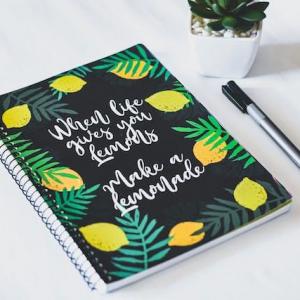
Introduction
Effective note-taking and information retention are crucial skills for academic success, professional development, and personal growth. Here are some strategies to help improve your note-taking and retention abilities:Active Listening
Active listening is a fundamental aspect of effective note-taking and information retention. To actively listen, it's important to be fully present in the moment and focus on the speaker or lecturer. Maintain eye contact, eliminate distractions, and mentally prepare yourself to absorb the information being conveyed. Actively listening involves paying attention not only to the words being spoken but also to the speaker's tone, emphasis, and body language. By doing so, you can identify the main ideas and key points being communicated. It's also helpful to take brief pauses during the lecture to process and mentally summarize what you've heard before moving on to the next point.Use Abbreviations and Symbols
Creating a system of abbreviations and symbols can significantly enhance your note-taking efficiency. Develop a personalized shorthand that allows you to capture information quickly without sacrificing comprehension. For example, using an arrow symbol (→) to represent "leads to" or an asterisk (*) to denote important points can help you condense information. However, it's crucial to ensure that your abbreviations and symbols are consistent and understandable to you when reviewing your notes later. If necessary, create a key or legend to remind yourself of the meanings behind your abbreviations.Organize Your Notes
Establishing a clear and organized structure for your notes is essential for easy navigation and comprehension. Begin by creating headings and subheadings to categorize and separate different topics or sections. Use bullet points, numbering, or indentation to create a visual hierarchy that indicates the relationships between ideas. This structure not only makes it easier to review your notes later but also helps you understand the flow and organization of the information being presented. Additionally, consider using colors or highlighting techniques to visually distinguish between main ideas, supporting details, and examples.Highlight Key Points
While it's important to avoid excessive highlighting, using this technique judiciously can be beneficial for information retention. Highlight or underline key points, important definitions, or essential concepts in your notes. This visual emphasis draws your attention to crucial information when you review your notes later, helping you quickly identify and recall the most important elements of the lecture or discussion. However, exercise discretion and reserve highlighting for truly significant information, as overdoing it can dilute its effectiveness.Summarize and Paraphrase
Rather than transcribing information verbatim, strive to summarize and paraphrase the main ideas in your own words. This process forces you to actively engage with the material and demonstrate your understanding. Summarizing involves condensing long explanations or complex concepts into concise statements that capture the essence of the information. Paraphrasing, on the other hand, entails expressing the ideas using different words while maintaining their original meaning. By summarizing and paraphrasing, you not only reinforce your understanding of the material but also create personalized notes that are easier to review and remember.Use Visual Aids
Visual aids, such as diagrams, charts, or graphs, can be invaluable tools for improving information retention. When appropriate, incorporate visual representations into your notes to enhance your understanding of complex ideas or relationships. Visuals provide a visual anchor for the information, making it easier to recall and comprehend. For example, if you're learning about the parts of a cell, drawing a labeled diagram can help you visualize the structure and remember the names and functions of each component. Experiment with different types of visual aids and find the ones that resonate best with your learning style.Review and Revise
Regularly reviewing and revising your notes is crucial for reinforcing your learning and consolidating information in your long-term memory. Set aside dedicated study sessions where you go through your notes, clarify any unclear points, and ensure you understand the material thoroughly. Consider creating a revision schedule that allows you to revisit your notes periodically, spacing out the review sessions for optimal retention. As you review, actively engage with the information by asking yourself questions, making connections to prior knowledge, and reflecting on the significance and implications of the material.Use Technology
Embrace the advantages of technology to enhance your note-taking and information retention. Utilize note-taking apps or software that allow you to organize, search, and access your notes easily. Digital platforms often provide additional features like audio recording, syncing across devices, and the ability to add multimedia elements such as images or links. These tools can streamline your note-taking process and make it more efficient, enabling you to focus on understanding and retaining the information rather than getting caught up in manual transcriptions.Actively Engage with Your Notes
Treat your notes as an active resource rather than a passive record. Engage with your notes beyond the act of taking them. Regularly review, reflect, and apply the information to real-life scenarios or problem-solving exercises. Actively questioning and challenging the content of your notes helps deepen your understanding and strengthens your memory pathways. Consider using your notes as a study guide to test your knowledge and fill in any gaps or areas of weakness. Additionally, actively seek opportunities to apply the information from your notes in practical situations, such as through discussions, projects,or simulations. By actively engaging with your notes, you transform them into a dynamic tool for learning and retention.Teach Others
One of the most effective ways to solidify your understanding and retention of information is by teaching it to someone else. Share your notes with classmates or friends and explain the concepts and ideas to them. Teaching others forces you to articulate your knowledge and break it down into digestible pieces. It helps you identify any gaps or areas where you need further clarification. Teaching also provides an opportunity for discussion and feedback, which can enhance your understanding and retention of the material. Through teaching, you deepen your own understanding and reinforce the connections between different ideas, ultimately improving your ability to retain and recall the information.Remember, these strategies may not work equally well for everyone. Experiment with different techniques and adapt them to suit your learning style and preferences. Consistency and practice are key to developing effective note-taking and information retention skills. By actively engaging with the material, organizing your notes, and regularly reviewing and revising, you can enhance your learning experience and improve your ability to retain and recall information effectively.
Article
Be the first comment
Elite Article
647 Views
0
0














